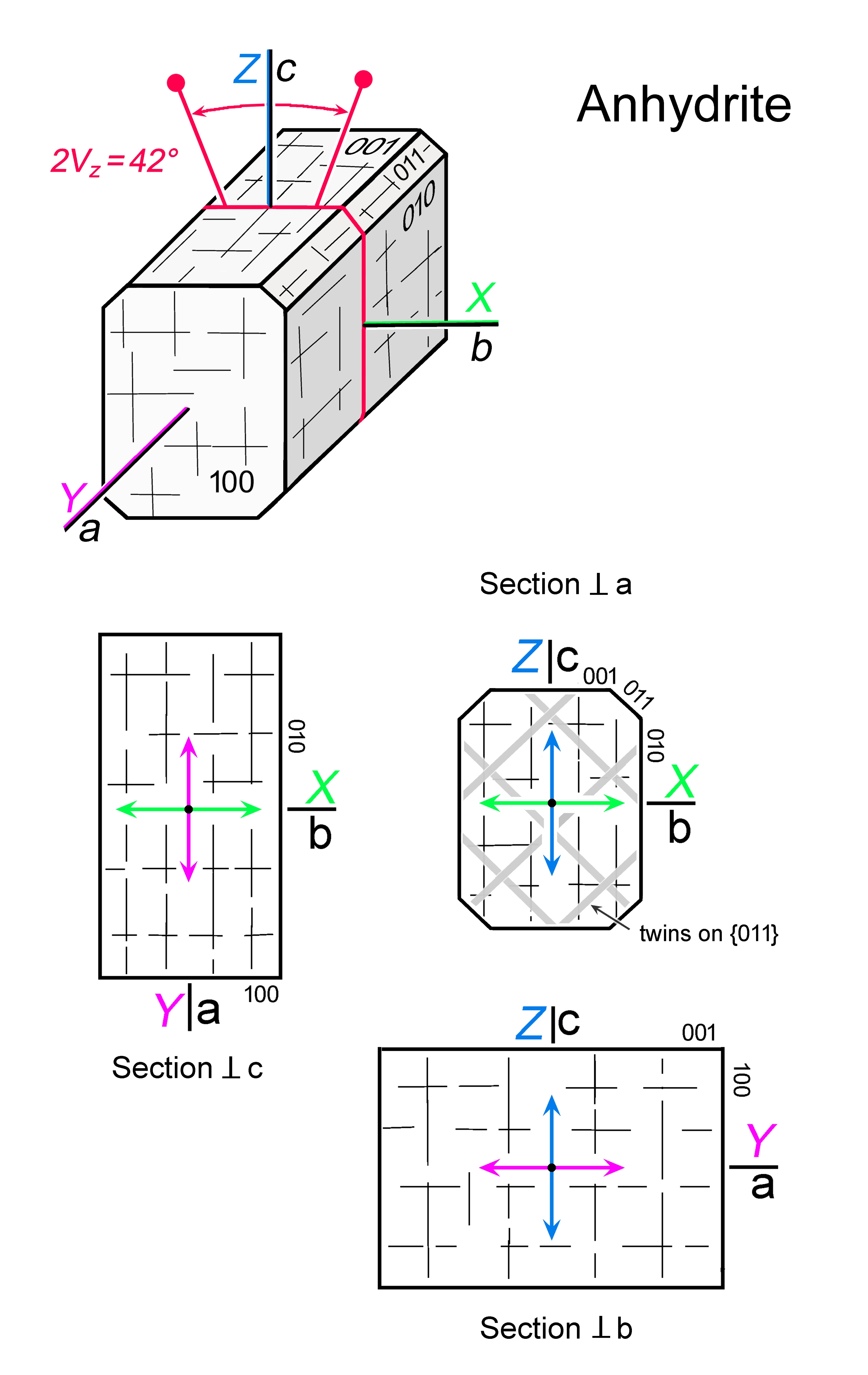|
| Formula | CaSO4 |
| | Optic class & sign | Biaxial positive |
| | Optical orientation | X = b, Y = a, Z = c |
| | Optical plane | (100) |
| | Relief | Moderate-positive |
| | Refractive indices | nx = 1.567 -1.574
|
|
ny = 1.574 -1.579
|
|
nz = 1.609 -1.618
|
|
| - |
| | Birefringence (max.) | 0.040 - 0.044 |
| | | - |
| | Optic Angle
| 2Vx
|
| | 2Vz
= 42 - 44° |
| | Sign of elongation | Length-slow, l (+) or length-fast, l (-), if elongate parallel a; length-slow, l (+) if elongate parallel c |
| | Interference figure | (001) sections display centred acute bisectrix figures with multiple isochromes |
| | Colour / pleochroism | Colourless |
| | Zoning | |
|
|
| Form | Habit | Massive aggregates, granular, blocky, parallel or radiating fibres, tabular |
| | | Surface | Anhedral to subhedral in aggregates; euhedral as singular crystals |
| | Cleavage | {010} perfect, {100} very good, {001} good; all orthogonal to each other |
| | Twinning | Simple and multiple on {011} |
| | Extinction | Straight to traces of {001}, {100}, {010} faces and cleavages in all sections parallel to a, b, or c |
|
|
| Reaction textures | Pseudomorphs after gypsum, also after calcite |
| | Alteration / decomposition | Gypsum |
|
|
| Occurence | Ign | |
| | | Met | |
| | | Sed | Evaporite deposits; may occur as an accessory mineral in dolomites and limestones; also in calcrete |
| | | Hyd | Oxidized zone of sulfide deposits, amygdule filling in basalts and andesites, in deposits around fumaroles and volcanic vents; in seafloor hydrothermal chimneys |
| | | Other | |
|
|
| Distinctive properties | Low birefringence, characteristic cleavages, relief |
| | Additional comments | |
|
|

 Images
Images 


 Images
Images 
